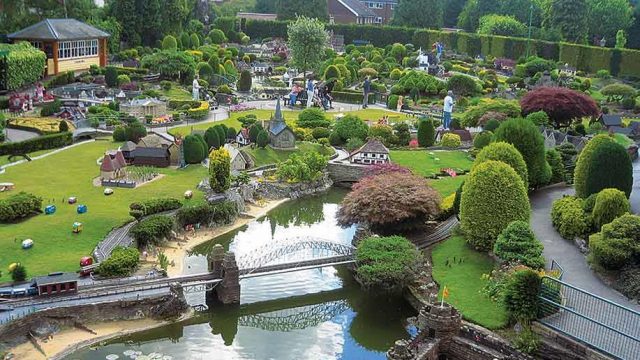“If I should die, think only this of me:/ That there’s some corner of a foreign field/ That is forever England.” When Rupert Brooke wrote these lines in 1914 at the age of 26, he could not have known that he would die the following year, far from his beloved England, in the Aegean Sea on his way to the fateful battle of Gallipoli. The lines immediately became, and have since remained, an anthem to a nostalgic, pastoral view of England: an England of lambs in springtime meadows, of real ale in thatch-roofed pubs, of maypole dancing on the village green. The lines take their place alongside William Blake’s ‘green and pleasant land’, Edward Elgar’s coronation hymn ‘Land of hope and glory’, John of Gaunt’s ‘this sceptr’d isle’ soliloquy in Shakespeare’s Richard II.
It’s easy to scorn such sentiments, but hard to jettison them entirely when you live in urban Delhi, it’s 40 degrees outside and the traffic’s backed up to Gurgaon. This summer, I willingly succumbed to the call of the mild, and headed back to England with a spring in my step and a song in my heart, ready and willing to be seduced again by the beech trees, country lanes and blackbird song of my native Buckinghamshire.
In this small corner of this small island is another, even smaller. In the small town of Beaconsfield is a tiny village called Bekonscot. The rooftops come up to your knee, the church spire reaches your shoulder, the goldfish loom like whales beneath the toy-size yachts asail on its central lake, and snaking through the more than 3,000 miniaturised shrubs and trees dotted throughout is a complex railway system, 10 scale miles of 7.25-inch gauge track, along which steam trains chuff and peep with their carriages of tiny people. The railway is one of the biggest draws — it’s been operational for 75 years, and with a dozen trains, seven stations, signals, sidings and all the paraphernalia of a real railway, it is Britain’s smallest heritage railway.
This miniature world was created by an unassuming accountant called Roland Callingham in the mid 1920s, making it the oldest model village in the world. Callingham’s hobby soon grew as more and more houses were added, branch-lines created, buildings built, until it was fit for a King or, in this case, a Queen and a miniature one at that. In 1934, the eight-year-old Princess Elizabeth came to visit; the newspaper photographs of the occasion are still on display. She looks like Alice in Wonderland after eating the magic cake as she peers like a giantess in a stiff frock coat over the ramparts of the castle to inspect the troops below.
There is no replica of Buckingham Palace in Bekonscot, but there is a model of another famous person’s home. Enid Blyton, creator of many little people herself, lived in Beaconsfield and it is only right and fitting that her country house, ‘Green Hedges’, with its gables and lawns and sweeping gravel drive should find itself cunningly shrunk and placed in one corner of this fairytale landscape — complete with a two-inch-high Noddy in his little yellow and red car parked outside the front door. She even set one of her stories, called The Enchanted Village, in Bekonscot.
But never mind the wiki-trivia, the joy of Bekonscot lies not in its literary or royal associations. There are no funfair rides here, no whirling carousels or vertiginous rollercoasters, no virtual reality machines, no multimedia displays. There’s a shop selling locally made tubs of ice cream, and a little playground for the kids to romp around on. There’s a souvenir shop — housed in an old railway carriage parked at the entrance — that sells Thomas the Tank Engine badges and novelty pencils. And that’s about it. But the main thing about Bekonscot is it’s small. And there’s something about smallness itself that is enchanting, magical. I station myself at the entrance and watch children as they first enter: the look on their faces is worth the price of a ticket. For a fraction of a second they stop dead in their tracks, mouths in an ‘o’ of amazement, unable to believe their eyes. And then they’re off — chasing trains, pointing out all the tiny details that adults skim over: the tiger cubs in their enclosure in the zoo, the coal on the conveyor belt in the little mining village in one corner, the cable car and mountaineers scaling a rocking incline, the smoke that billows every 15 minutes from the roof of a thatched cottage and the firemen at the scene, the bandstand on the pier, the choir singing somewhere inside the cathedral on the hill… There’s a cricket match and tennis, bowls and rugby and netball, a fox hunt, gypsy caravans and grocery delivery trucks, schools and hospitals and shops with silly names (Lee Key Plumbers, and the like), there are farmyards and funfairs, an airport with bi-planes parked on the runway, fishing boats and yachts, potteries and shire horses ploughing a field, a watermill and a working windmill gently turning its sail on the gentle Buckinghamshire breeze.
If travelling long distances in a car takes it out of you, imagine you’re wearing seven-league boots, and take a short walk around the villages of Bekonscot. This is travel writ small. And very lovely it is, too.
Bekonscot Model Village, Warwick Road, Beaconsfield, Buckinghamshire, HP9 2PL, England; Timings: 10am-5pm; Entrance fee: £9 for adults and £5.50 for children. www.bekonscot.com




